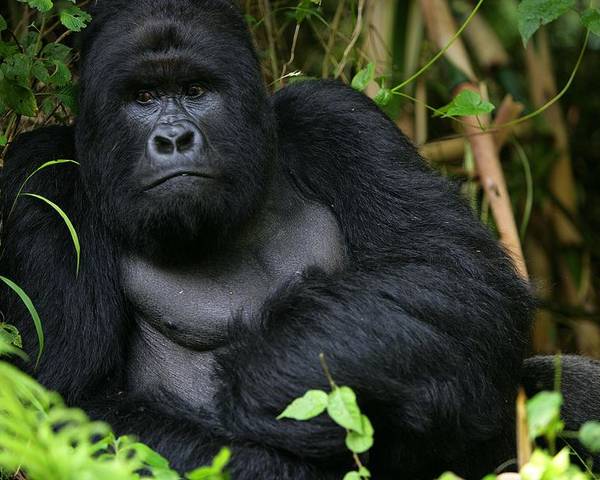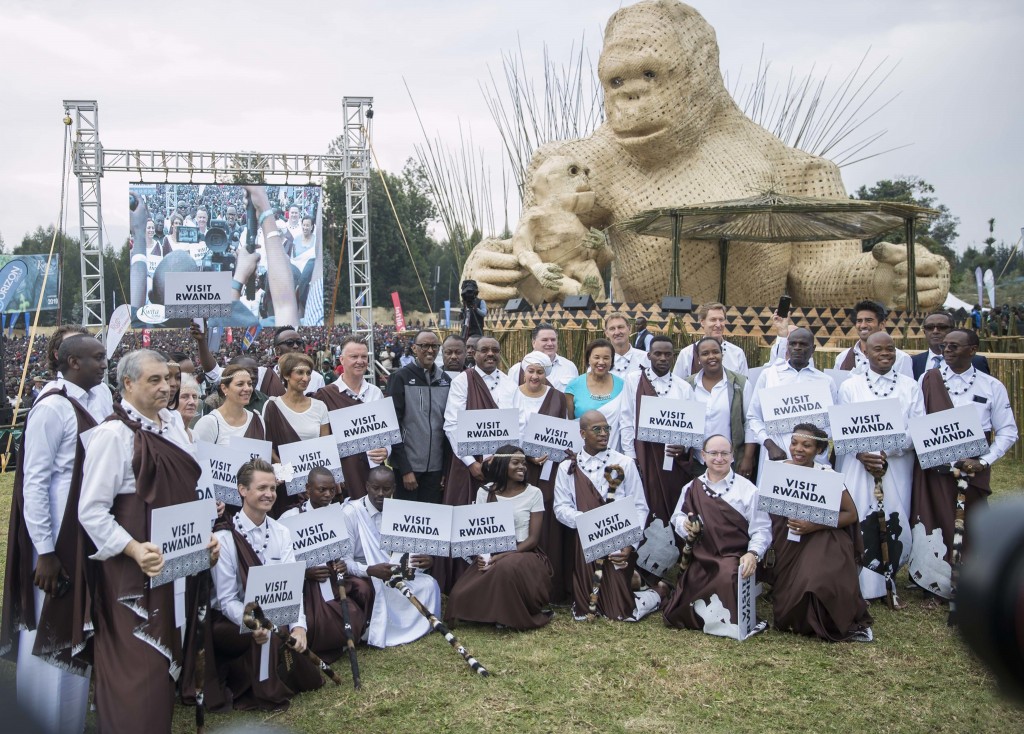Gorilla families in Rwanda
Gorilla families in Rwanda can also be called gorilla groups, which live in the forests of Volcanoes National Park, Northwest of Rwanda. Tracking Gorillas in Rwanda is the most rewarding and worthwhile tourism activity, that any tourist will want to do while visiting Rwanda. In the volcanic ranges that stretch from Rwanda, Uganda and the Democratic Republic of Congo, the endangered mountain gorillas reside there. Gorillas trekking in Rwanda is very safe and relatively accessible, with the conservation efforts and quality assurance from the government.
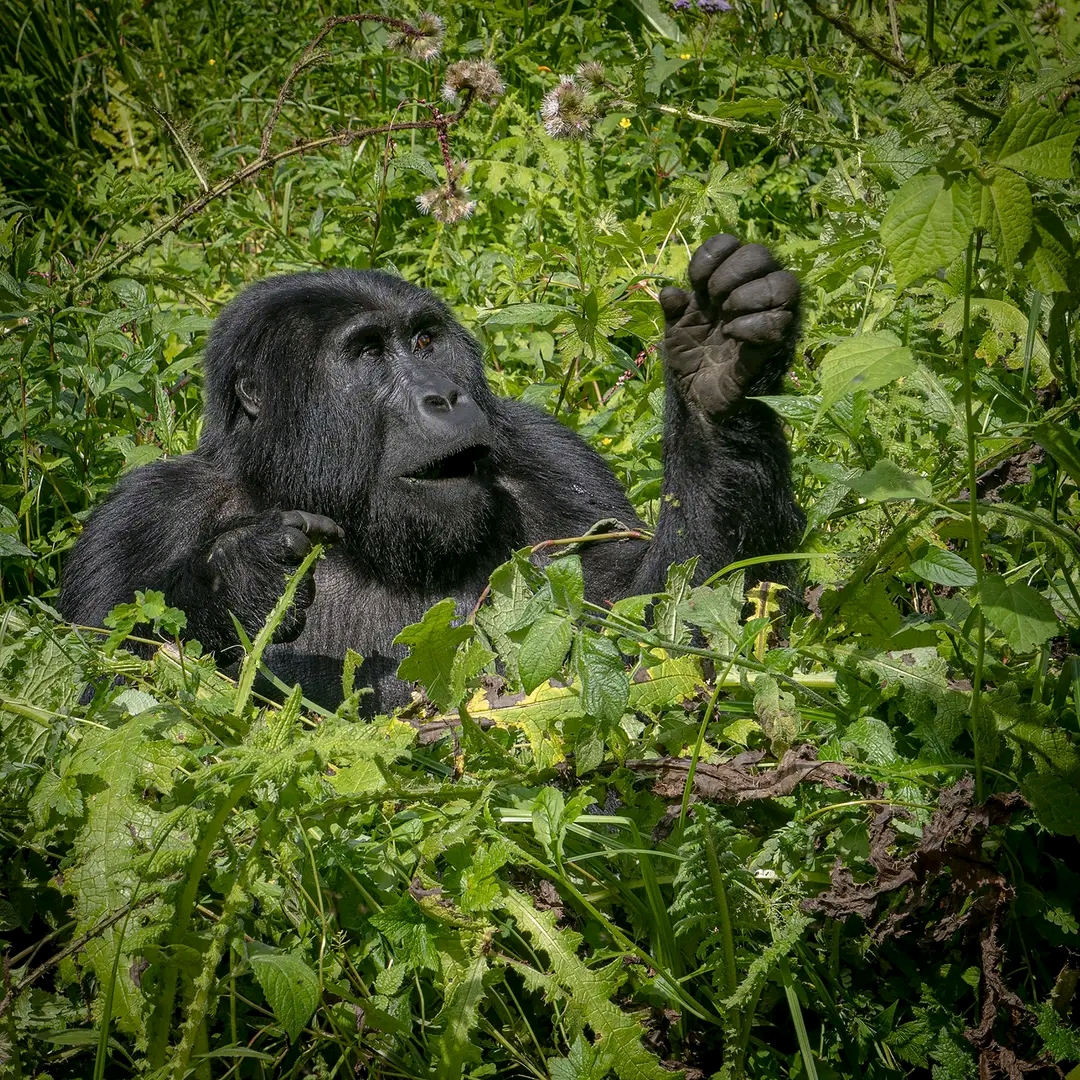
There’s only one national park in Rwanda that has mountain gorillas, and that’s Volcanoes National Park. There are twelve gorilla families living in the Volcanoes National Park, which are fully habituated. However there are other few that are habituated for scientific research purposes. Like Uganda’s gorilla families, Rwanda’s gorilla families or troops also have at least one silverback, leading other females and young gorillas.
Everyday, only 8 gorilla tracking permits are available for purchase, per gorilla group/ family, for tourists to track these gorillas. On a daily basis, there are only 96 permits available for tracking gorillas, and each gorilla permit costs 1500$. It’s twice that of Uganda but it’s highly recommended to book in advance, either online or using a tour operator.
At least 10% of the revenue got from these gorilla permits is channeled towards helping the local communities to build schools, health centers, as well as roads. In case some gorillas happen to damage local farmers’ crops, there’s a compensation fund to ensure peaceful co-existence.
Gorilla families in Rwanda
On the day of tracking, visitors are supposed to gather at the Volcanoes National Park headquarters in Kinigi at 7:am. Here you get a briefing and also allocated a family group to track on that day according to fitness levels. During your tracking, porters are available to carry your backpacks and cameras, and also offer a helping hand. Your hike can ranger from 30 minutes to 4 or more hours, reaching an altitude of between 2,500m and 4,000m.
In case your interested in tracing the footsteps of Dian Fossey, her tomb is just a 30-minute drive from the park headquarters. You continue with a hike for two or three hours through the forest, to above 3:000m altitude. There are a lot of benefits got from Gorilla tracking for example: employment for the locals, porters, game rangers, trackers, drivers and staff at tourist lodges.
Gorilla families in Rwanda
Rwanda has more than 12 gorilla families and these include: Susa, Igisha, Karisimbi, Sabyinyo, Amahoro, Agashya, Kwitonda, Umubano, Hirwa, Bwenge, Ugyenda and Muhoza.
-
Susa gorilla family
Susa gorilla group is currently made up of 21 individuals including 3 Silverbacks, 5 Adult females, 3 Blackbacks, 1 Sub-adult female, 4 Juveniles as well as 5 Infants. This gorilla family is led by the dominant Silverback Impuzamahanga and is a very old group.
In it’s formation in 1974, it started with only 7 individuals, and before splitting up in 2009, it was the biggest ever recorded group with 41 members. The Susa gorilla group split in two, forming Karisimbi and Igisha gorilla groups. Karisimbi group also split to form another small group called Isimbi gorilla family. But the original Susa gorilla group remained with 16 only individuals with a dominant silverback.
The Susa gorilla group is known to have the first set of surviving twins in the history of mountain gorillas. These were first born in 2004 (Impano and Byishimo) and later in 2011 (Impeta and Umudende) came in. Unfortunately, in 2015, one of the twins “Impeta” who was born in 2011, passed on. This gorilla group lost 2 of its adult females who were killed trying to protect their two babies from poachers. This incident happened in May 2002 as the poachers wanted to steal and sell them on the illegal market.
Recently, an adult female with an infant left the Susa group to join the lone Silverback Noheli to form a new group.
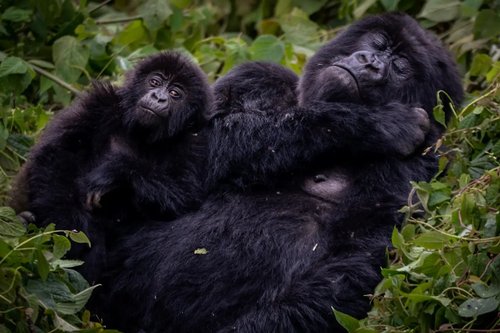
-
Igisha gorilla family
Igisha group is led by a dominant Silverback called Igisha, which started in 2014 after splitting from the original Susa. Igisha moved with 23 individuals from Susa and is now made up of 34 individuals. Among these, there are 6 Silverbacks, 10 Adult females, 1 Black back, 1 Sub-adult female, 2 Sub adult males, 3 Juveniles and 11 Infants. The numbers in this group grew because Igisha is very aggressive and protective, hence keeping the group safe and won over more members from the surrounding groups.
-
Amahoro
Amahoro gorilla group has 21 members including 3 Silverbacks, 7 Adult females, 1 Blackback, 2 Sub-adult females, 2 Juvenile and 6 Infants. It has a dominant Silverback “Gahinga”, and according to reports, one of the silverbacks has on several occasions disappeared for days with about 7 individuals, but later returns to the group.
The habituation of the gorilla group started in March 1996, and stopped in 1997 due to wars in the region. In 2000, Amahoro group was opened for tourism activities till date, however, it is also under observation of a split.
Unfortunately, on May 4th, 2002, the dominant Silverback Amahoro died at the age of 31 years. As soon as Amahoro died, the remaining two subordinate Silverbacks “Ubumwe and Charles” count not agree on who would lead the group. Eventually, they split into two, with the main Amahoro under “Ubumwe” and another under Charles. Afterwards, Charles’s group got a name “Amahoro B”, then “Umubano”.
-
Agashya
Agashya gorilla family has 22 members under one dominant Silverback “Agashya”. The group has 4 Silverbacks, 4 Adult females, 1 Blackback, 2 Sub-adult females, 2 Sub-adult males, 2 Juveniles as also 7 Infants. Way before, it used to be known as Group 13 and was headed by the dominant Silverback Murthi who died in 1992, leaving behind 3 young males (Munane, Nyakarima as well as Kwirinda). Thereafter, these 3 males stayed together until Munane turned into a Silverback and led the group.
Kwirinda died of injuries sustained through a fight with another group, while Nyakarima left the group. In his quest to expand the group, Munane interacted with other groups and acquired females. He unfortunately died on May 18th, 2002, due to natural causes leaving behind a blackback to lead the group. This loss brought a Silverback (Agashya) from an unknown group who came and took over leadership from the young blackback. The group was later named Agashya in 2010 at the Kwita Izina ceremony.
Gorilla families in Rwanda
-
Kwisanga
Kwisanga gorilla group has 17 members including 2 Silverbacks, 3 Adult females, 2 Blackbacks, 2 Sub-adult males, 3 Juveniles and 5 Infants. It’s led by the dominant Silverback called Kigoma. Kwisanga is one of the newest gorilla groups in Volcanoes National Park formed on 4th May 2021 from a split.
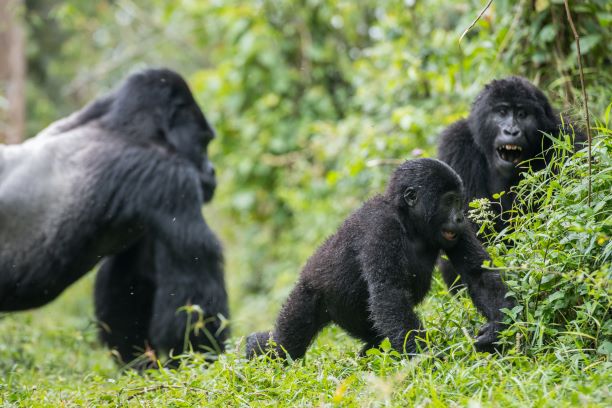
-
Umubano
Umubano gorilla group was formerly part of the Amahoro group and is still led by Charles as the dominant Silverback. The Umubano group has 14 members including 6 Silverbacks, 2 Adult females, 3 Blackbacks, 2 Juveniles and 1 Infant. Umubano separated from Amahoro A which was led by Ubumwe without aggression. However, these 2 groups would meet up and interact, feed together for one or two days and then part ways..
-
Sabyinyo
Sabyinyo gorilla group is found in Volcanoes National Park in Rwanda and is led by the dominant Silverback Gihishamwotsi. At its habituation the group was named Amavubi (wasps) due to their aggressive character which gave hard time to the habituation field teams. The name was later changed to Sabyinyo, after the mountain where the group was first seen. After the death of the Silverback Murthi of Group 13, Guhonda a lone Silverback took advantage of Murthi’s death and grabbed 3 females from Group 13 (Gukunda, Kampanga and Ijisho) and a number of others from Group 11. These are the individuals that Guhonda used to form his group with. Sabyinyo group currently consists of 18 individuals including 3 Silverbacks, 6 Adult females, 1 Sub adult, 4 Juveniles as well as 4 Infants.
-
Hirwa
Hirwa gorilla family is another new group with 16 members with one Silverback dominating. It’s one of the luckiest groups with twins who were born in 2011, and also has managed to keep them alive. The word ‘Hirwa’ means ‘Lucky One’, and this group was formed by members from the Sabyinyo family as well as group 13. It’s between the mountains of Mount Gahinga and Sabyinyo.
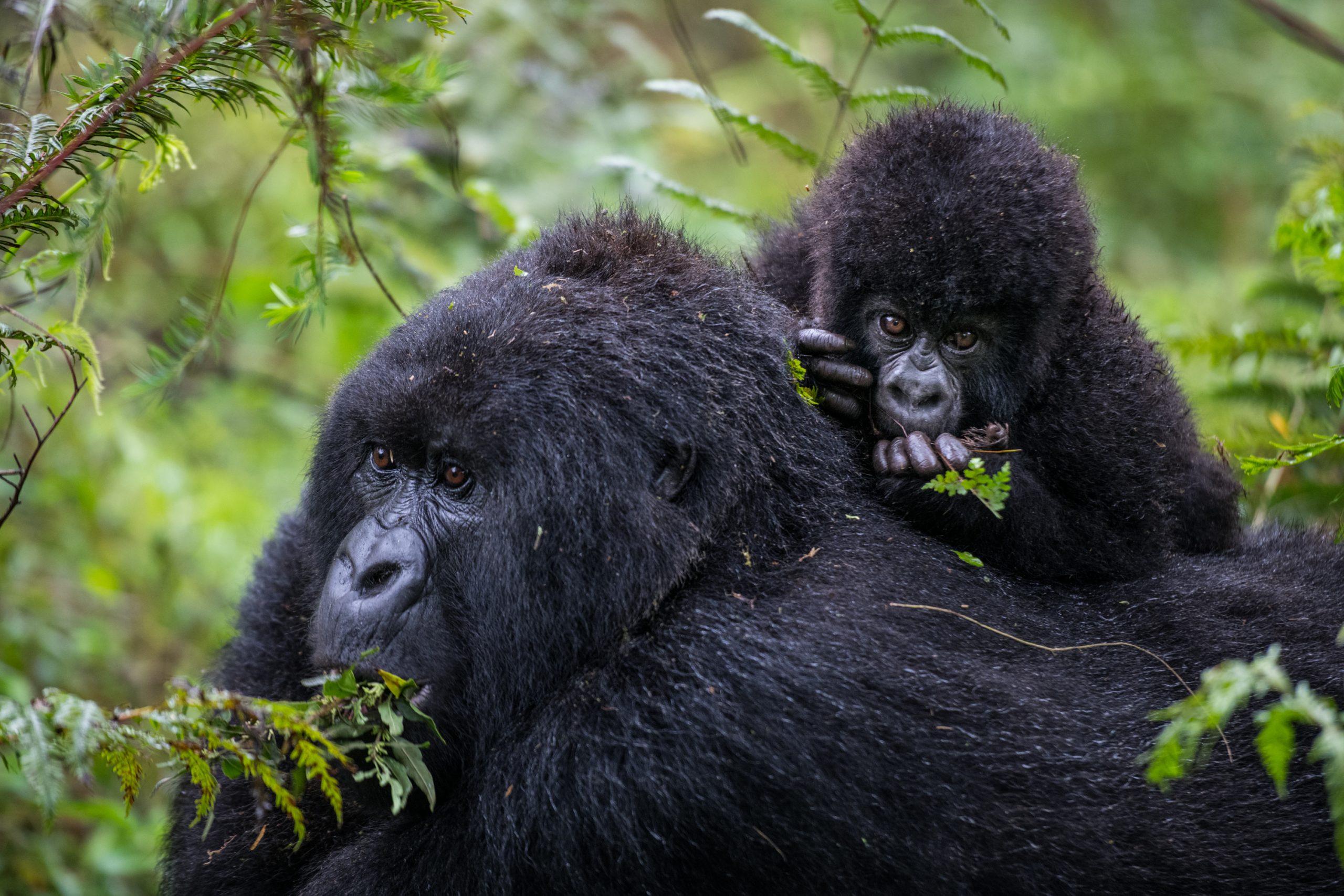
-
Karisimbi
Karisimbi gorilla family lives on the slopes of Mountain Karisimbi, in Volcanoes National Park. Today, its exact total number is unknown since it was last seen in October 2016, with approximately 16 members under one dominant silverback. Before crossing to DRC on October 7th, 2016, it had 5 Silverbacks, 1 Adult female, 2 Blackbacks, 1 Sub-adult female as well as 1 Juvenile. This gorilla family was formed after spliting from the main Susa group on June 28th, 2009. This gorilla family is currently the hardest to trek simply because it resides on the upper slopes of Mount Karisimbi that sits on an altitude of 4507m. The leader took his group members very far to reach so as to stay away from trouble. For guests who need extreme adventure with serious hiking, you will then reserve your permit to track this gorilla family.
-
Ugenda
Ugenda gorilla family is made up of 11 members with 2 Silverbacks, however being led by one dominant silverback. Ugenda means mobile which partly relates to group always on the move and hardly settles in one place. This gorilla family resides in Mount Bisoke and the hike is relatively not very difficult. Hiking up for trekking requires some physical strength, meaning you need to prepare in advance and for a more challenging trek.
-
Titus
Titus gorilla Family gets its name after a silverback called Titus, who was surprisingly born during the time Dian Fossey’s research at Karisoke Research Center. It was a sad time when Titus’ family got murdered by poachers, hence leaving him as the only survivor. Growing up alone was very hard for him, but managed to overcome all those obstacles and emerge as one of the most successful Silverbacks to ever inhabit Volcanoes National Park in Rwanda. This group inhabits in the slopes of Karisimbi and Visoke volcanoes.
Gorilla families in Rwanda
-
Bwenge
Bwenge gorilla family gets its name from a word Bwenge, which means “wisdom”, and has 11 members under one dominant silverback. It’s the easiest gorilla group to trek and is located on the slopes of Mount. Bwenge the leader, initially left his native group and was joined by a few female members from other families. Therefore this led to the creation of this new group, unfortunately Bwenge met very dark times of loosing about 6 of its infants.
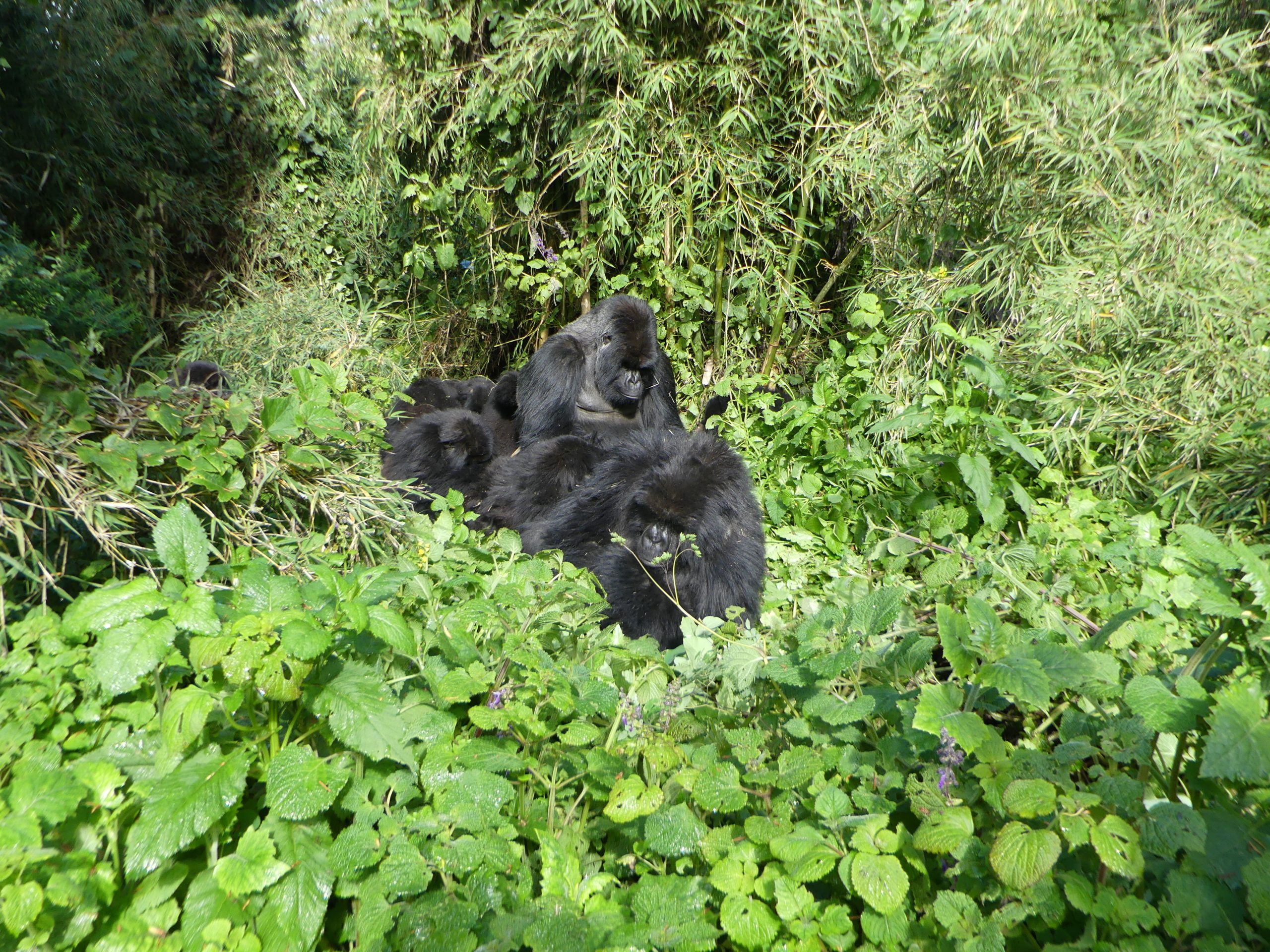
-
Isimbi
Isimbi gorilla group is under a dominant Silverback-Muturengere, and is made up of 16 members with 1 Silverback, 4 Adult females, 7 Juveniles as well as 4 Infants. The Isimbi group was created as a result of the spliting of Karisimbi group in April 2012. In 2012 after the split up, a Silverback called Getty took over leadership of the new group with only 7 members, but unfortunately he died on December 22nd, 2013. After his death, the young blackback by then called Muturengere, took over the group with the help of Poppy, an adult female. Muturengere fought other groups that sought to grab some members of his family, and recently two adult females left this group to join a single/ lone Silverback Noheli in order to form a new group.
-
Noheli
Noheli gorilla group is under a dominant Silverback Noheli, and is the newest and smallest habituated group. This group has 7 members including 1 Silverback, 3 Adult females as well as 3 Infants. Noheli group was formed on 7th November 2021 when three females left Isimbi and Susa groups to join the then lone Silverback, Noheli. One of the females joined with an infant and shortly after the group was formed, two other adult females had babies.
Gorilla families in Rwanda
Rwanda’s Gorilla Naming Ceremony
Visit Rwanda and experience one of the world’s most important celebrations of nature and meet Rwanda’s newborn baby gorillas. In the year 2005, Rwanda began officially naming the mountain gorillas in what has become a global celebration of nature. This ceremony is an opportunity to thank the communities that live around Volcanoes National Park, the research partners, vets and the dedicated conservationists, rangers and trackers who protect the gorillas. Over the last 18 years, 374 mountain gorillas have been named, and all who take part in this conservation drive. The 18th Kwita Izina was held on Friday, 2 September 2022, and celebrated the country’s commitment to sustainable as well as responsible tourism.
Here is a full video documentary of Gorilla trekking and Gorilla habituation process.
Here are some of the gorilla safari packages available, you can book with us here
Some of the frequently asked Questions by people on Google.
- What is the famous gorilla family?
- How many gorillas are there in Rwanda?
- What are families of mountain gorillas?
- What are gorilla group names?
- What is a group of 4 gorillas called?
- Who leads a gorilla family?
- What is the largest gorilla family?
- How many gorillas live in a family group?
- What are baby gorillas called?
- How long do gorillas sleep?
- How long is a gorilla pregnant?
- How many months is a gorilla pregnant?
- Do gorillas mate for life?
- How old do gorillas live?
- How old can gorillas give birth?
- Do gorillas ever eat meat?
- Can gorillas have babies with humans?
- How long do baby gorillas stay with their mother?
- Can gorillas walk after birth?
- How fast do gorillas grow?
- What fruits do gorillas eat?
- What do gorillas like to drink?
- What animal eats gorillas?
- How do gorillas sleep?
- Do gorillas know humans?
- How do you show respect to a gorilla?
- What time do gorillas go to bed?
- Do gorillas protect humans?
- Can gorillas see in the dark?
- How often do gorillas bathe?
- What do gorillas do when raining?
- Do gorillas drink water or not?
- What do gorillas do for fun?
- What do gorillas do when they are angry?
- What are 2 important facts about gorillas?
- What time do gorillas wake up?
- Which country has most gorillas?
- Why do gorillas cover their ears?
- How many times a day do gorillas poop?
- How often do gorillas drink?
- How much meat do gorillas eat?
- What do we call a female gorilla?
- Do male gorillas mate?
- How many stomachs does a gorilla have?
- Who discovered gorillas?
- Who is the world’s most loved gorilla?
- What blood type do gorillas have?
- Is the oldest gorilla still alive?

